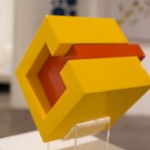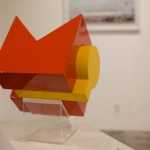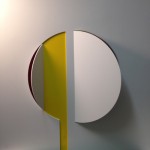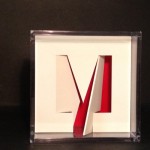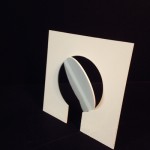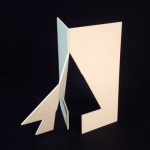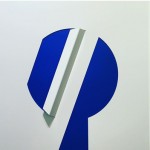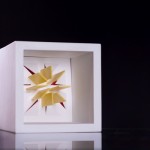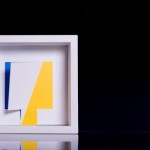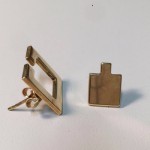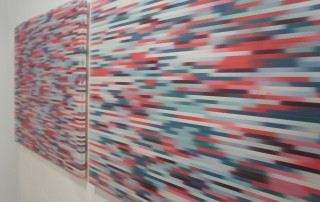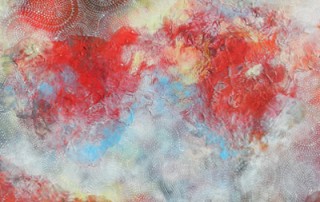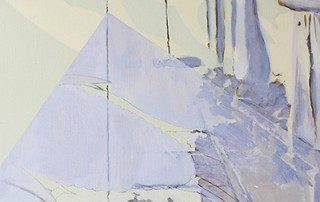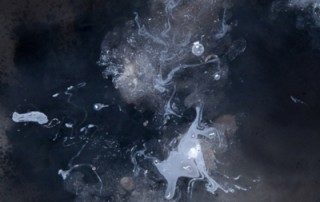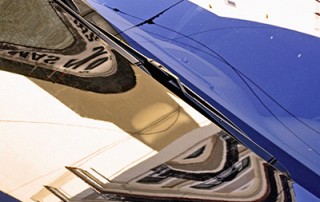Project Description

Saul Galavis
Born in Caracas, Venezuela in 1948. He began his studies in Architecture at the prestigious Central University of Venezuela receiving BA degree in Architecture in 1972. He began his career working for different private architectural firms, specializing in designing single family housing units and other residential projects. By 1982, he received a Master’s degree in City and Regional Planning at Cornell University. Later on, he went back to Venezuela and established himself in the city of Barquisimeto where he worked on many interesting architectural projects for 17 years, culminating in every architect’s dream: designing and building his own home. With a keen for arts as well, he took interest in sculpture, after fashioning a pair of earrings for his youngest daughter in 1997. This paved the way to a deeper exploration of more sophisticated proposals, which led him to exhibit his sculptures in several Ibero-American Art Fairs curated by Magda Arria from Graphic Gallery. His work has been shown in Caracas, Barquisimeto, Tokyo, Sofia, Mallorca, Lewis, Hoboken, Hudson City and Miami. In 2009, he moved to the United States as a permanent resident, currently residing in Miami, Florida.
Artist Statement
Saúl Galavis is an Architect with a passion for descriptive geometry, sections and the planes fold who takes preference in tri-dimensional surfaces when creating his art. Restating the geometric abstraction with white volumes and forms, he works with positives and negatives. This playfulness, a game of coupling he has christened Constructivist Geometry, blends the material and creates self-produced shadows. This concept of emptiness and fullness became his obsession after he created a pair of earrings for his daughter as a birthday present in 1997. It was there where he got the idea of wiring sculptures in copper. In 1998, he applied for the Carving Wood Workshop at the Martin Tovar y Tovar School in Barquisimeto, Venezuela, mixing wood pieces with copper wires. His initial works led him to create serigraphs about that particular earring, which was basically a square. He did isometric drawings of them, using the 3 primary colors (red, blue and yellow) mixed with white, black, silver and gold. One of those serigraphs in Marastar paper 15 x 15 cm. was sent to an international competition in Tama University of Japan in 2000 where it received great attention and won a prize. This recognition was the impulse to continue his work with enthusiasm. He then decided to create iron laminate cubes 30 x 30 x 30 cm, including half and three quarters of cubes, painted in chromo base paints and supported by Plexiglas smaller cubes. Searching for new materials and techniques, he developed his wood-wall-sculptures. This is his white period in which the introduction of the light became fundamental in his work. Proper shadows being part of the piece is one of his main objectives. He uses MDF as it is a light and noble material which fives a nice finish to the pieces. Later on, he went back to his earrings in bigger sizes, using metal sheets painted in powder coating. Technology has been essential in his creative process, especially in the cutting and blending process, getting perfect results which are what most impress the public. Laser cuts for metal and Nc for others are the perfect tools he is currently using. In a search for being more efficient in working, he tried using PVC sheets, 2 mm thick, which comes in several colors. This led him to an exhibition he presented at Hudson City, NY in November 2016, which was received with great enthusiasm by the press and the public. Currently he is working on his next project: huge scale pieces in metal sheet to be exhibited in public spaces.
Nació en Caracas, Venezuela, en 1948. Comenzó sus estudios de Arquitectura en la prestigiosa Universidad Central de Venezuela, graduándose como Licensiado en Arquitectura en 1972. Empezó su carrera trabajando para diferentes empresas de arquitectura privadas, especializadas en el diseño de viviendas unifamiliares y proyectos residenciales. En 1982, recibió el título de Maestría en Planificación Urbana y Regional de la Universidad de Cornell. Más tarde, regresó a Venezuela y se estableció en la ciudad de Barquisimeto, donde trabajó en varios proyectos arquitectónicos interesantes durante 17 años, culminando en todos los arquitectos del sueño: el diseño y la construcción de su propia casa. Galavis siempre tuvo una fuerte inclinación hacia las artes plásticas, y luego de haber de la configuración de un par de pendientes para su hija menor en 1997, desarrolló un fuerte interés por la escultura. Esto abrió el camino para una exploración más profunda de propuestas más sofisticadas, lo que le llevó a exponer sus esculturas en varias ferias de arte ibero-americano bajo la curaduría de Magda Arria de Galería gráfica. Su trabajo ha sido mostrado en Caracas, Barquisimeto, Tokio, Sofia, Mallorca, Lewis, Hoboken, Hudson City y Miami. En 2009, se trasladó a los Estados Unidos como residente permanente, y actualmente reside en Miami, Florida.
Declaración del artista
Galavis trabaja con positivos y negativos; vacios y llenos, lo reitera tanto, hasta llegar a desdoblarse en sus propias sombras. Es un juego de montar y desmontar que el mismo a definido como Geometria Constructivista. Un par de aretes para el cumpleaños de su hija en 1997, fue el verdadero comienzo de su carrera artistica, sin dejar de contemplar que la arquitectura, su profesion es ya un arte. Su concepto de llenos y vacios se ve reflejado en la etapa de sus esculturas en alambres de cobre. En 1998, se inscribio en la escuela Martin Tovar y Tovar en Barquisimeto, para aprender a tallar madera, de sea etapa se cuentan mezclas de madera tallada y alambres de cobre. Aprendio a realizar serigrafias, y emprendio el dibujo de los aretes en isometrias usando las tres figuras geometricas principales: el cuadrado, que entre otras cosas simboliza el mundo material y es contenedor. El triangulo, simbolizando la Trinidad; cuerpo, mente y espiritu, entre muchas otras caracteristicas. Y por ultimo el circulo, que representa la unidad, el todo y el infinito como un signo protector. En papel Marastar y usando pequeños formatos (15×15 cns), en los tres colores primarios ( Azul,rojo y Amarillo) combinados con Blanco, negro, plata y oro, envio un par de ellas a una competencia de la Tama University of Japan en 2000. Un reconocimiento y premio le fue otorgado, y con eso se produjo un gran impulso para seguir adelante. Decide crear cubos en volumenes de caras de hierro laminado de 30 x 30 x 30 cns, pintados con pintura Cromobase y montadas sobre bases acrilicas. Investigando nuevos materiales e incluso tecnicas, desarrollo sus esculturas de madera de pared, y ahi comienza la etapa blanca, donde el juego de luces y sombras es fundamental. Su propia sombra se convierte en parte de la obra de Saul Galavis. Luego, regresa a los aretes, en dimensiones mayores, usando laminas metalicas recortadas y dobladas en formas diferentes, pintadas en for a electrostatica. Tecnologia ha sido esencial en esta nueva etapa de produccion, en especial en el logro de la perfeccion de los cortes y doblajes, que es algo que aprecia el espectador en sus obras. Rayos Lasser para el corte en metal y NCN, para los de PVC son algunas de esas herramientas que se implementan al realizar cambios en materiales. Para el logro de mayor efectividad en la confeccion de las piezas para la exhibicion de Hudson City, incurre en el uso de PVC 2 mm de espesor en blanco, Azul, rojo y amarillo, en Nov 2016, con una aceptacion importante en el publico. Actualmente, esta trabajando en piezas de gran formato en metal para llegar su Arte a Los espacios publicos, otro objetivo en un futuro muy proximo.
Contact
www.saulgalavis.com
saulgalavis@gmail.com
Instagram @saulgalavis

